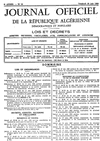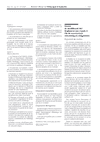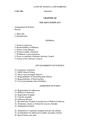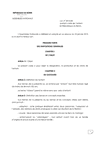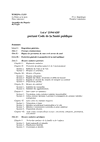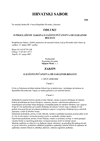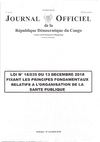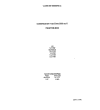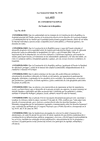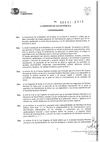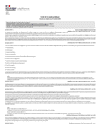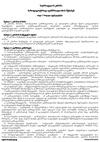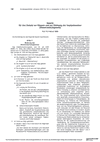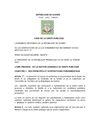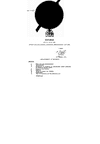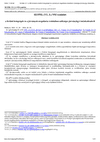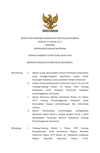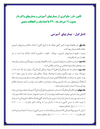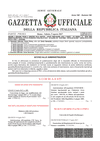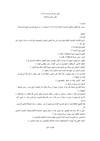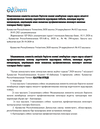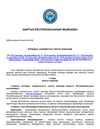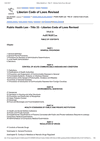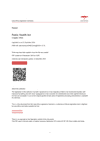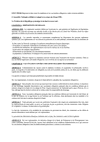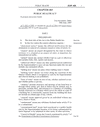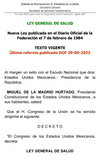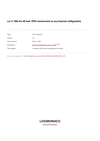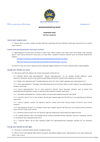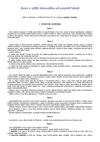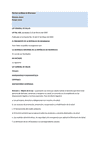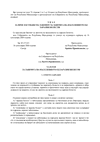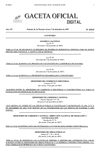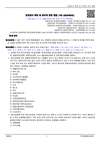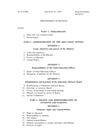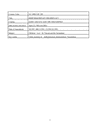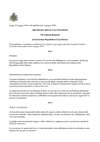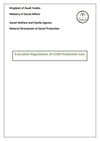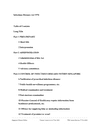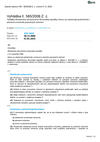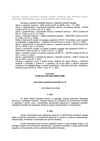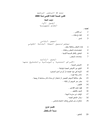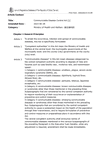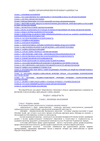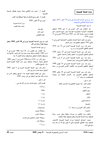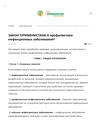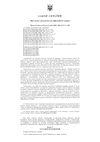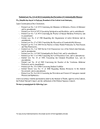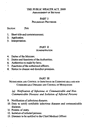Childhood vaccination
Source: We consulted the national legislature websites for each country to find their childhood vaccination policies. These sites were accessed between October 2023 and February 2024. Information on measles came from the WHO Measles Fact Sheet and the WHO Measles Vaccination Coverage dashboard.
Measles, a viral disease transmitted via respiratory droplets, is one of the most contagious pathogens known, with an estimated basic reproduction number of 13. The virus can remain active and infectious for up to two hours in the air and on fomites. Measles is estimated to kill over 100,000 people per year, mostly in low- and middle-income countries with weak healthcare infrastructure. Disease morbidity is highly concentrated in children under the age of five. While there is no specific treatment for measles, prevention with vaccination is critical to reducing morbidity and mortality related to the disease.
Measles-containing vaccines (MCV), often administered in the MMR (Measles, Mumps and Rubella) vaccination are highly effective in preventing measles disease. An estimated 95% of a given population must be fully vaccinated with two doses of MCV to ensure herd immunity, yet in 2022, just 74% of the world’s youth population had completed the immunization regimen. In 2022, less than 80% of children in the African and Eastern Mediterranean WHO regions, as well as the Region of the Americas, received two doses of MCV. Moreover, no WHO region achieved the 95% threshold of MCV coverage necessary for herd immunity.
To encourage childhood vaccination, some countries make certain routine vaccinations mandatory for citizens and residents. Here, we track the diseases that have a legal mandate for children to be routinely vaccinated against measles.
Source: We consulted the national legislature websites for each country to find their childhood vaccination policies. These sites were accessed between October 2023 and February 2024. Information on polio came from the US CDC and the Children's Hospital of Philadelphia.
Poliovirus is transmitted via either the fecal-oral route or via respiratory droplets. The virus causes flu-like symptoms in about 25% of cases, meningitis in 1-5% of cases, and can lead to paralysis in 0.5% of cases. The case-fatality rate for individuals with polio-related paralysis is 5-10%.
There are two available vaccinations against poliovirus: Inactivated poliovirus vaccine (IPV) and Oral poliovirus vaccine (OPV). As suggested by the name, IPV utilizes an inactivated (killed) virus to prime the immune system to rapidly react to, and clear, subsequent poliovirus infections. IPV must be administered via intradermal injection and tends to be readily available in high-income countries. By contrast, OPV utilizes an attenuated (weakened) virus to stimulate an immune response in the recipient. The OPV can be widely and conveniently distributed, as it requires oral administration rather than injection. For this reason, OPV tends to be used in low- and middle-income countries without significant healthcare infrastructure. While OPV is extraordinarily safe for the recipient, due to the attenuated virus in the formulation, the vaccinated individual may be able to shed the virus during defecation. If contracted by an un- or under-vaccinated individual, this may lead to the outbreak of circulating vaccine-derived poliovirus (cVDPV). Therefore, the administration of OPV requires adequate vaccination coverage to prevent cVDPV. Widespread vaccination against poliovirus has been critical to preventing community transmission of the disease. Due to high rates of preventative vaccination, wild-type poliovirus (WPV) remains endemic in only Afghanistan and Pakistan.
To maintain polio vaccination rates and prevent disease outbreaks, many countries mandate the administration of poliovirus vaccinations for children. Here, we track which countries have such requirements for citizens and residents.
Source: We consulted the national legislature websites for each country to find their childhood vaccination policies. These sites were accessed between October 2023 and February 2024. Information on diphtheria came from the US CDC and the article "Duration of Immunity and Effectiveness of Diphtheria-Tetanus–Acellular Pertussis Vaccines in Children" by Domenech de Cellès, Rohani, and King.
Diphtheria is a disease caused by the production of diphtheria exotoxin by the Corynebacterium _diphtheriae _bacteria. These bacteria are primarily spread by respiratory droplets and must be treated with a combination of antitoxin and antibiotics. The disease can lead to death in 5-10% of infected individuals over the age of five with access to these medications. Despite access to treatment, in children under five years of age, diphtheria can cause death in up to 20% of cases. For individuals without adequate access to antitoxins, the case fatality rate can reach up to 40%. However, the completed vaccination regimen given for diphtheria has an efficacy of 97% in preventing disease. Here, we track the countries that mandate the routine vaccination of children against diphtheria.
Source: We consulted the national legislature websites for each country to find their childhood vaccination policies. These sites were accessed between October 2023 and February 2024. Information on tuberculosis came from the WHO Tuberculosis Fact Sheet. We also consulted "History of the BCG Vaccine" by Luca and Mihaescu, and "Infant BCG vaccination and risk of pulmonary and extrapulmonary tuberculosis throughout the life course: a systematic review and individual participant data meta-analysis" by Martinez et al.
An estimated 1.8 billion people worldwide are infected with _Mycobacterium tuberculosis, _the bacteria that causes tuberculosis (TB). This respiratory pathogen is estimated to kill over 1 million people each year, with over 80% of cases and deaths occurring in individuals residing in low- and middle-income countries. Treatment of active TB requires access and adherence to a 4-6 month antibiotic regimen. Incomplete or incorrect TB treatment has greatly contributed to the development of Multidrug-Resistant TB (MDR-TB), which threatens to exacerbate morbidity and mortality as a result of TB infection.
The bacilli Calmette-Guerin (BCG) vaccine is administered to prevent TB infection. Despite the availability of the BCG vaccine, there is conflicting evidence on the preventive capabilities of the vaccine against pulmonary and extrapulmonary TB. Likewise, available evidence suggests that the efficacy and durability of BCG may vary significantly based on multiple factors, including time of vaccination and method of vaccination administration. However, when administered intradermally at birth, BCG generally prevents significant morbidity and mortality from TB for at least the first five years of life. To protect young children from disease and death as a result of TB, some countries require vaccination against the disease during the postnatal period. Here, we track the countries that mandate TB vaccination for children residing domestically.
Source: We consulted the national legislature websites for each country to find their childhood vaccination policies. These sites were accessed between October 2023 and February 2024. Information on chickenpox (varicella) came from the WHO Varicella page and "Varicella zoster virus infection" by Gershon et al.
Varicella, commonly known as chickenpox, is a disease caused by contraction of the varicella-zoster virus. Respiratory secretions, including droplets and aerosols, facilitate the transmission of the virus from person to person. Emerging evidence also suggests that contact with varicella skin lesions may drive transmission. While varicella tends to be a relatively mild disease in children, it can cause severe complications and death in neonates and immunocompromised populations. Moreover, children with a history of chickenpox infection may develop shingles, a disease caused by the reactivation of the varicella-zoster virus, which may cause more serious morbidity and mortality in elderly populations.
Varicella can be prevented with a varicella-containing vaccine. Often this immunization is given in a singular formulation, though may also be included in the Measles, Mumps, Rubella and Varicella vaccine (MMRV). Varicella has traditionally been conceived of as a less consequential disease relative to those with higher case-fatality rates. Thus, the demand for vaccinations against the disease has tended to be lower. However, protecting vulnerable members of the community, such as immunocompromised children, requires achieving herd immunity through vaccination. Here, we track the countries that mandate routine vaccination against varicella for children.
Explore policies



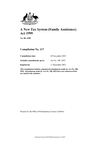
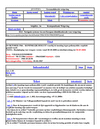
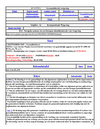
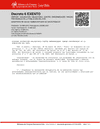
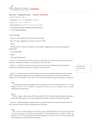
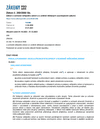

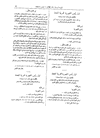
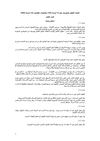

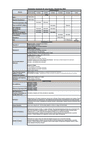

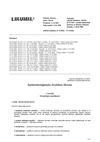

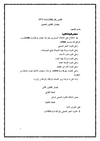
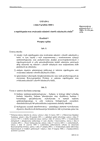
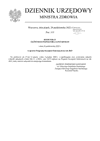


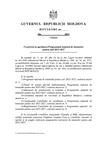
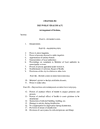
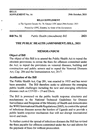
Download
Download a CSV of the country information that is displayed in the map above.
Download topic data
